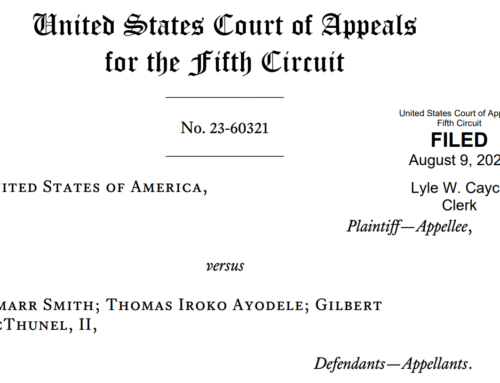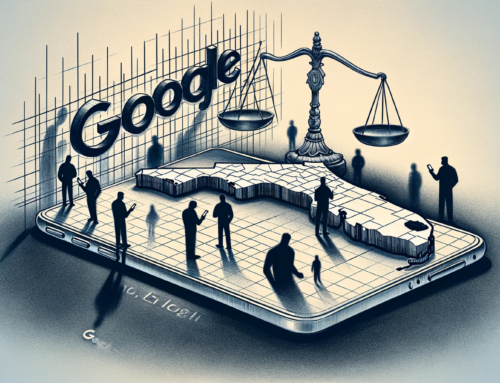Police Use of Geofence Warrants: A Troubling New Tactic That Puts Innocent People at Risk
What are Geofence Warrants and How Do They Work?
A geofence warrant allows police to draw a virtual boundary around a location and get tech companies like Google to provide information on all devices within that area during a certain time period. For example, if there was a robbery at a store, police could ask Google to give them data on every smartphone that was within a few blocks of that store when the crime occurred. They then use this location history to generate a list of possible suspects.
Google and other tech companies keep detailed records of users’ locations through GPS, WiFi networks, and cell towers. So when the police serve them with a geofence warrant, the companies can pinpoint every device that crosses the geographic boundaries set by the police. This results in a dragnet collection of personal data.
A Man Becomes a Suspect for Being in the Wrong Place at the Wrong Time
A recent article in The Guardian provides a chilling example of how these warrants can falsely implicate innocent people. In 2020, Florida resident Zachary McCoy received an alarming email from Google saying police were requesting his personal information.
It turned out police were investigating a burglary and had gotten a geofence warrant for data on all devices near the victim’s home. McCoy just happened to be bicycling through that neighborhood at the time of the crime. Even though he had nothing to do with the burglary, the geofence warrant made him a suspect simply for being in the area.
This demonstrates how these warrants effectively criminalize innocent behaviors like taking a bike ride through your own neighborhood. They subject people to invasive police scrutiny for no reason other than their physical proximity to a crime scene.
Reverse Search Warrants Allow Fishing Expeditions into Private Data
As explained in the article, geofence warrants are part of a broader category of legal requests known as “reverse search warrants.” These controversial warrants include keyword search warrants, which allow police to get data on everyone who searches particular keywords or phrases online.
For example, if there was a bank robbery, police could potentially get search histories on whoever googled something like “how to rob a bank.” As you can imagine, these requests are extremely invasive and overbroad, scooping up innocent people’s sensitive information.
Lack of Transparency on How Often Tech Firms Comply
One alarming aspect discussed in the article is the lack of transparency from tech companies on how often they comply with geofence and other reverse warrants. While firms like Google and Apple publish transparency reports on overall government data requests, there is little detail on geofence warrants specifically.
However, advocacy groups like the Electronic Frontier Foundation successfully pressured Google into disclosing it received about 21,000 geofence warrants between 2018-2020 according to the report. Apple recently revealed it got 13 such warrants in 2022 but did not comply with any, likely because the company collects less granular location data than Google. Nevertheless, much more transparency is needed.
Tech Companies Must Better Protect User Data from Fishing Expeditions
The article makes clear that the onus falls heavily on tech firms to push back on overbroad warrants and safeguard people’s information. The fact that Apple received 13 geofence warrants but had no relevant data to provide shows that tech companies can take steps to technically limit the collection of intrusive data like precise location histories.
As Albert Fox Cahn of the Surveillance Technology Oversight Project notes, “If you don’t collect [the data] you can’t give it to the government.” Companies like Google should restrict how they gather and retain user data so that police fishing expeditions are not so easy.
Tech firms should also rally for judicial reforms. Police must be required to demonstrate real probable cause for search warrants instead of relying on flimsy digital dragnets.
Lack of Notice to Users Makes It Harder to Fight Back Against Warrants
The article highlights that a major issue is individuals are often kept in the dark when police request their private data. Tech companies are frequently prohibited from notifying users about geofence or other warrants targeting them.
McCoy only found out because Google alerted him, which is rare. Without notice, innocent people have no chance to hire lawyers or file motions to block improper warrants. This prevents courts from providing oversight and makes it harder to challenge dragnet searches.
Reforms Needed to Protect Privacy and Increase Oversight
In light of these concerns, the article notes that lawmakers have proposed reforms such as requiring police to demonstrate probable cause and preventing warrants for broad areas or groups. Tech companies need to join privacy advocates in pushing for these protections.
Police do need tools to investigate crimes in the digital age. However, casting such a wide dragnet with geofence warrants goes too far. It turns thousands of innocent people into suspects and erodes liberty in the name of overzealous enforcement. With sensible limitations and increased transparency, we can strike a better balance between privacy and public safety.









